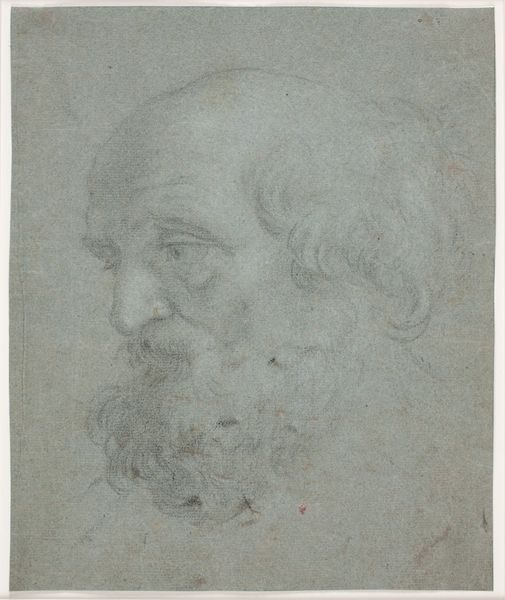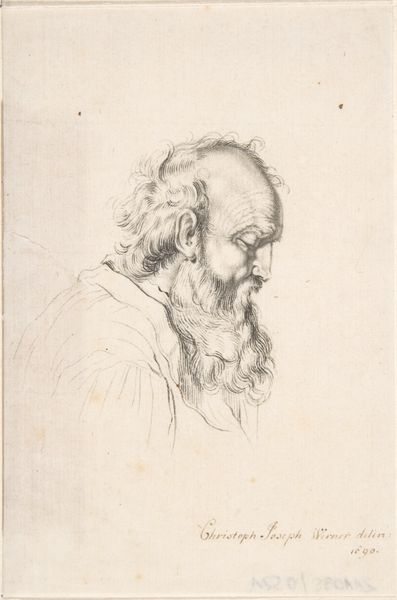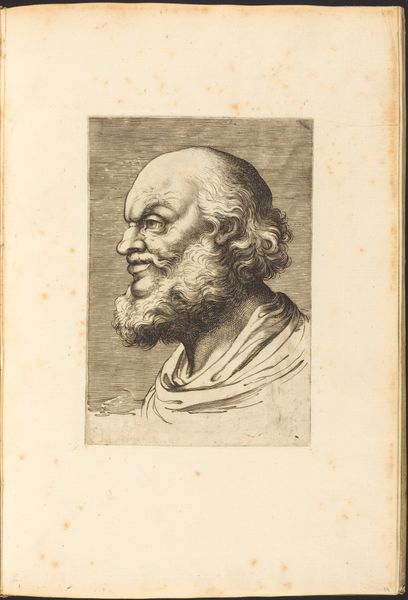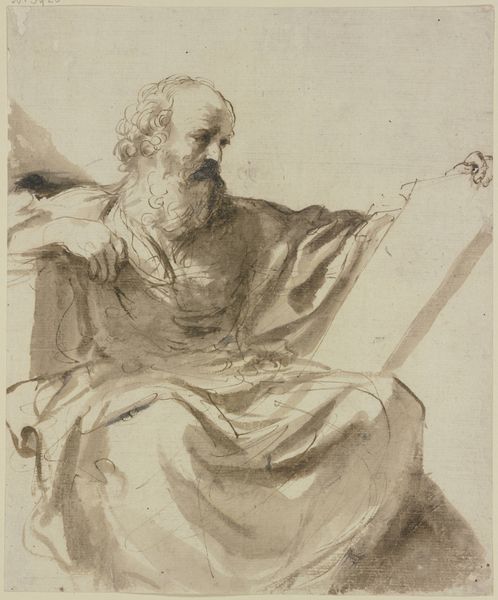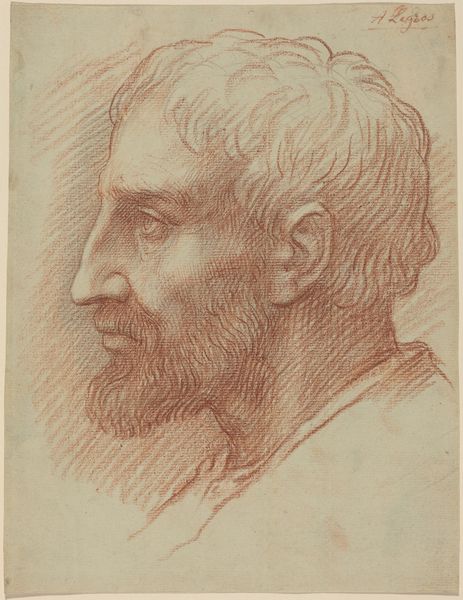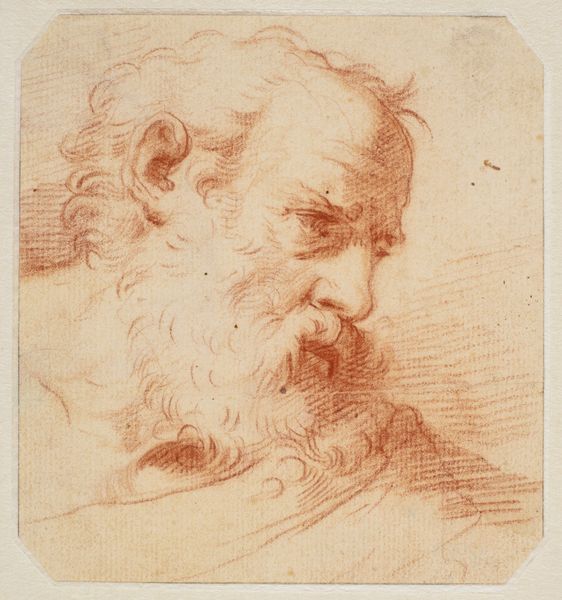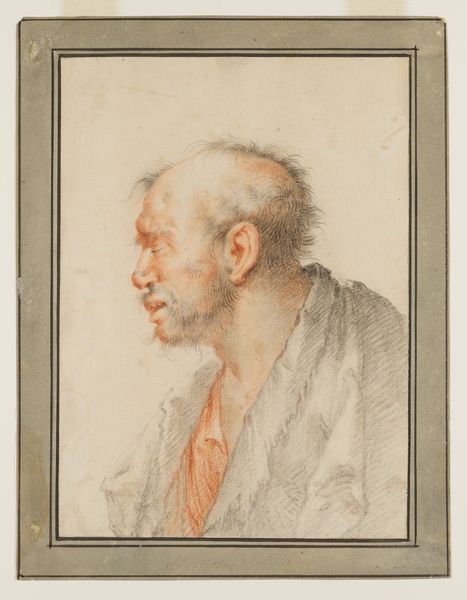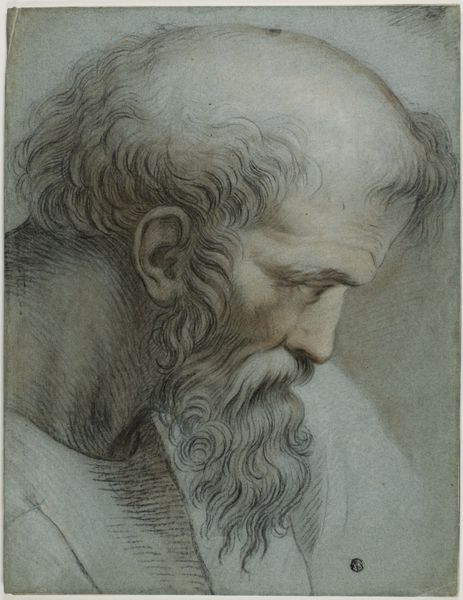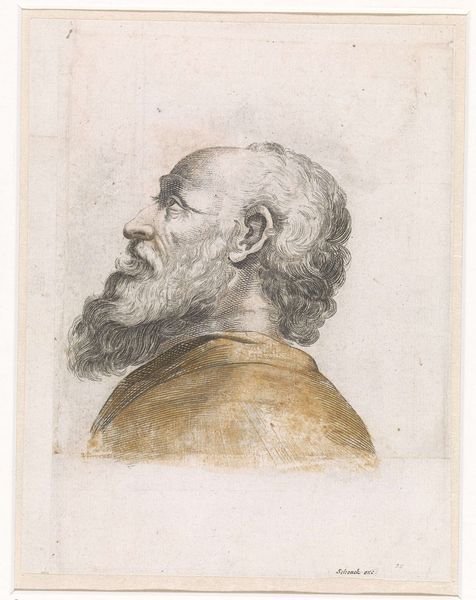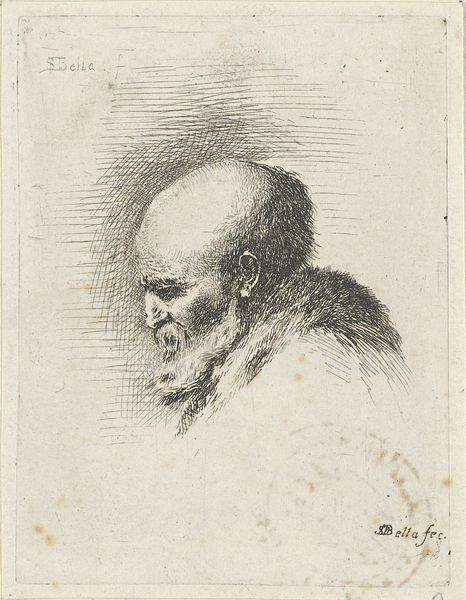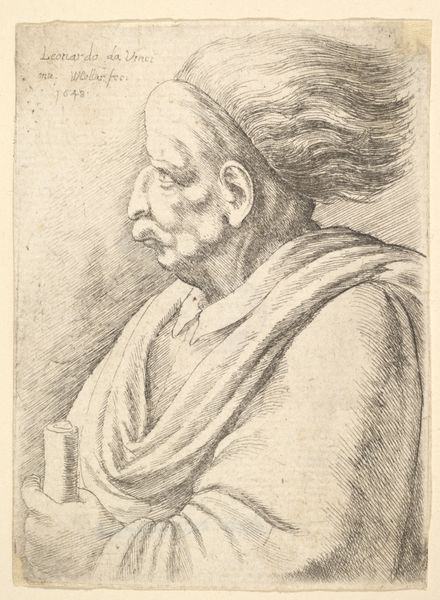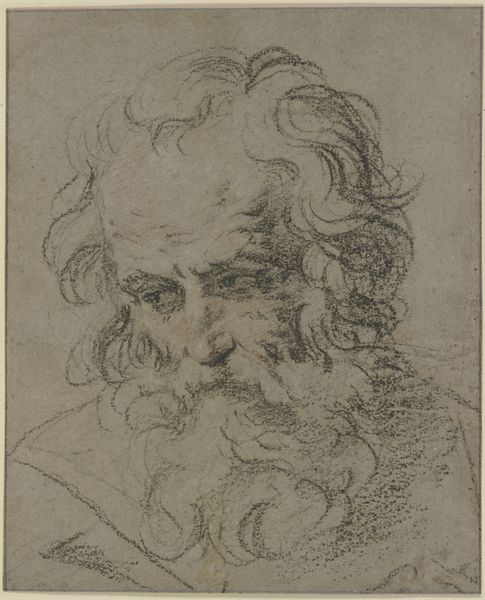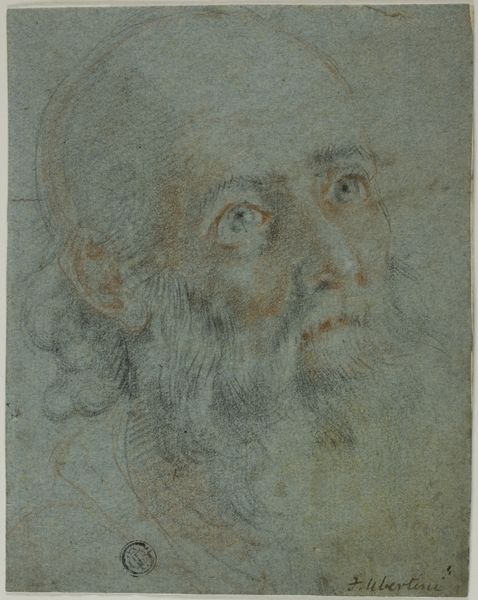
Head of a Grotesque Male Head (facing right) c. 16th century
0:00
0:00
drawing, red-chalk, dry-media, chalk, charcoal
#
portrait
#
drawing
#
red-chalk
#
11_renaissance
#
dry-media
#
chalk
#
portrait drawing
#
charcoal
#
italian-renaissance
#
portrait art
#
watercolor
Dimensions: 10 1/2 x 7 9/16 in. (26.67 x 19.21 cm) (image)
Copyright: Public Domain
Curator: Here we have Camillo Procaccini's "Head of a Grotesque Male Head (facing right)", a red-chalk drawing from around the 16th century. It currently resides here at the Minneapolis Institute of Art. What strikes you about this particular portrait? Editor: Immediately, it's the raw intensity of the subject's gaze. He looks almost wary, certainly not idealized in any way. It feels very honest, almost confrontational despite being a profile view. Curator: It's interesting you use the word honest. This kind of "grotesque" head study, which was quite popular in the Italian Renaissance, played with ideas of caricature, pushing at the boundaries of what was considered acceptable representation. Consider what stereotypes the artist may be subverting or playing into. Editor: Exactly, that challenges the very idea of portraiture as a status symbol or a celebration of beauty. You’ve got a character study stripped bare. What were the artistic conventions or power dynamics being questioned, you think? Was this for study? For parody? Or did it address larger philosophical points? Curator: Well, many artists utilized these kinds of studies to train and sharpen their ability to render emotional states as well as capturing physical form with some exaggeration. In this era, it would likely function in this manner. The texture is especially striking in the face with how the shading models around the eyes. Editor: Yes, that shading around the eyes tells so much of his story. I wonder about the politics of representation at play. Who was allowed to be beautiful, and who was relegated to the "grotesque"? And how much did class or social standing influence those categories? It could speak to how those deemed ‘other’ were perceived and portrayed. Curator: Procaccini captures a complexity that transcends simple categorization. In its display here, it has always struck me how this head confronts current notions of dignity and representation. Editor: Precisely. It reminds us that portraiture has always been a battleground of identity, a site where power, representation, and perception intersect and frequently collide. Thanks, it's definitely given me a lot to think about in how this artwork reflects how social standing influenced art in the period.
Comments
No comments
Be the first to comment and join the conversation on the ultimate creative platform.
